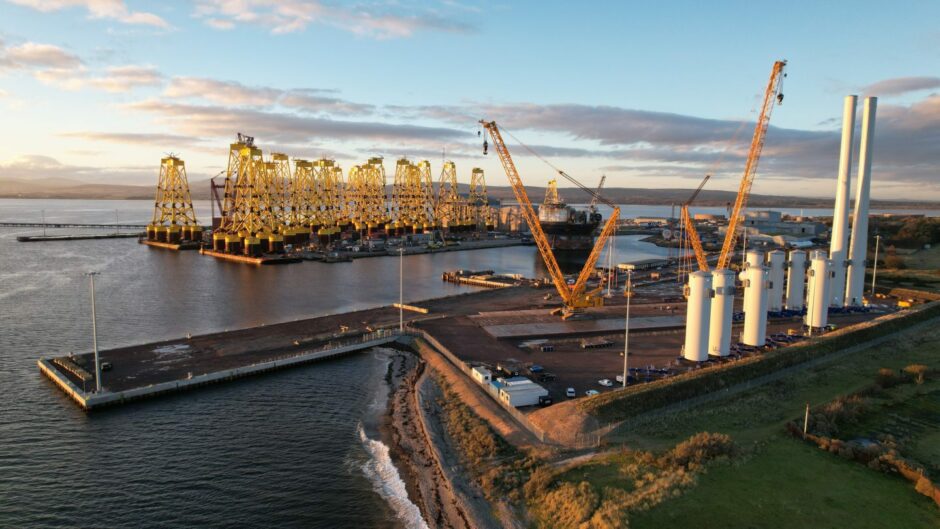
A new process to help the Scottish supply chain prepare for the wave of work expected from the Scotwind leasing round is now open to applicants.
Officially opened by Scottish energy minister Gillian Martin at the All-Energy Conference in Glasgow on Thursday, the so-called Strategic Investment Model (SIM) aims to align the local supply chain with the plans made by developers for their ScotWind projects.
Overseen by the Scottish Offshore Wind Energy Council (SOWEC), the hope is that providing further information on requirements and opportunities will give investors the certainty needed to deploy capital, particularly in ports and manufacturing facilities.
With over 30 GW of capacity on the table, the SIM working group has involved 19 developers and consortia behind offshore wind projects, as well as the Scottish Government, enterprise agencies and Crown Estate Scotland.
Initial applications will focus on projects which support the creation of a Scottish offshore wind port clusters. This includes fabrication facilities for fixed and floating platforms; manufacture of components such as monopiles, foundations, blades, towers and cables; and assembly or staging activities for offshore project build out.
These projects must also be of a scale whereby they can provide “significant support” to the Scottish offshore wind sector, and where capital expenditure is expected to exceed £50 million.
It comes amid calls to “decouple” investment in port infrastructure from the uncertainties surrounding wind capacity, policy and project timelines, to ensure Scotland and the UK can benefit from the huge build out of floating wind.
‘Critical milestone’ for Scottish manufacturing
Commenting on the SIM launch, SOWEC’s industry co-chairman Brian McFarlane of SSE Renewables said: “As an industry we know that ScotWind presents a unique opportunity for Scotland.
“But we also face a number of challenges that we need to overcome, and the best route to doing this is working in collaboration.
“The opening of the SIM to project applications is a critical milestone in helping reach agreement on what port and manufacturing infrastructure we need to build in Scotland.
“We then need to work together to help fast track these projects ready to deliver.”
Project director, Arup Edinburgh, Elliot Wishlade added: “Arup is working closely with SOWEC, the Scottish government and offshore wind developers.
“We’re pleased to be able to launch the SIM, and we are looking forward to working with ports and the supply chain to help build the case for what and how we invest in Scotland to put the correct infrastructure in place.
“If projects want to understand what the SIM is and how it could support their investment and growth plans, we would encourage them to come forward and engage with our team and the SIM process.”
Stage 1 of the process will involve an assessment of investment proposals taken forward by industry, the supply chain, enterprise agencies and other interested parties. The aim is to secure agreement on priorities and needs.
Depending on the results of Stage 1, developers and stakeholders can then choose whether to opt in to Stage 2.
The first priority for SOWEC is to use the SIM to address the need to secure investment for Scotland’s ports and manufacturing, though the experience may then inform future SIM rounds looking at other shared industry issues such as skills.
The first SIM process application window is now open until 2 June 2023, and SOWEC expects to produce the First tranche of prospectuses within two or three months.
Recommended for you
